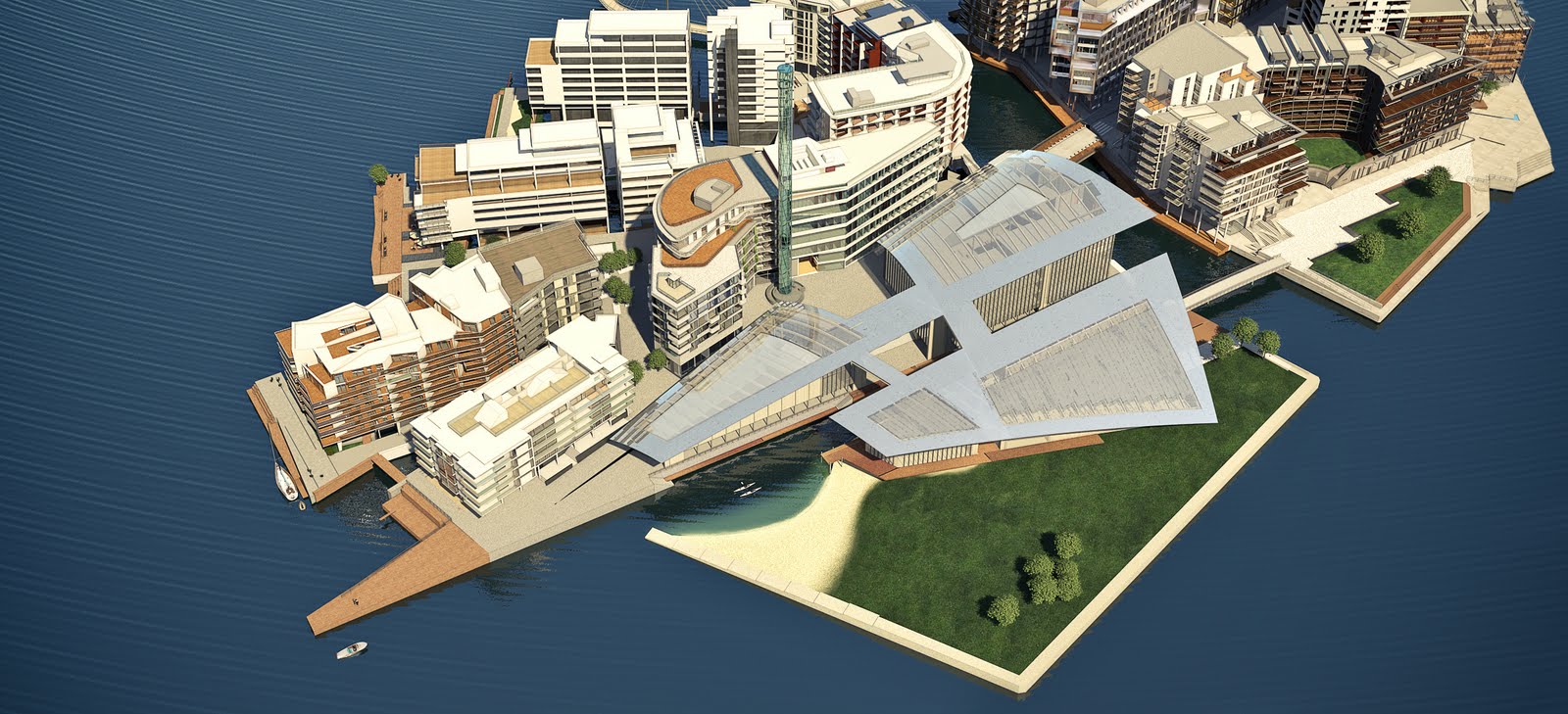Last weekend I’ve visited the EUE2010 in Utrecht hosted by Joep van der Steen. Two days packed with lots of great lectures and demonstrations on 3d visualisation, games and animation. There was more than I could see, but I wanted to share the best lectures I’ve visited.
Knut Ramstad
First up: Knut Ramstad (http://www.tjuvholmen.com/). He models architecture, and is also an architect. Nothing new there. He showed a rather large project where he manages the single 3d-model of the entire development. The developers have given him the task to provide them with all visual means to make decisions about the designs. There are many architects working on this project and using a single 3d-model enables them to see all designs in relation to each other. This wouldn’t be possible if every designer made his own models and images. This approach will make the quality of the overall project much better. the sheer volume of models and images was impressive. Besides that, the images looked great too!

Johan Boekhoven
Next was a presentation by Johan Boekhoven. He spoke about maxscript and ways to make the development cycle of tools much faster and how to speed up the general workflow when scripting. It wasn’t a long time ago when maxscript was just a text-editor not much unlike notepad. Now 3dsMax has a scintilla based script-editor. It’s still very basic, but Johan demonstrated how you could change it to help develop scripts much faster. He’s kind enough to post all demonstrated files up on his blog.
IKEA
The next day Martin Enthed from IKEA held a presentation. I expected him to show us the plans of ikea for using 3d in the future. But to my great surprise he showed us what ikea already is doing with 3d, and that’s a lot! He said that already more than half of the productshots like these are being made in 3d (3dsMax and Vray). The sheer volume of designs and materials they handle is very impressive. He also showed two methods of capturing real materials and real lighting. The materials are being shot with a camera under changing light. These images are then composited in their own software. This generates a nice, flat diffuse texture and a normal map. The lighting capture method is still in development. He showed a rig with a moving hdr-probe. By moving the hdr-probe you can calculate the exact position of a pixel in space. The images are being translated to a voxel-grid. The brightest voxels are extracted and converted to light sources in 3dsMax. He called it the “light vacuum”. The results were stunning when he compared the actual photo to the rendered image.
He also pointed out that while they have a large team to create all images, only a small portion of them does 3d. Most of the communications department has a more traditional background: photographers, set-dressers, lighters. They’re working on tools to make the transition of the real world to 3d for these people as smooth as possible.
Snowball vfx
Finally, the people from snowball vfx had their partners from mantis-vision (http://www.mantis-vision.com) over to create a real-time pointcloud of the audience sitting in the room. It took only a few minutes, with a seemingly home-made capturing device. An off-the-shelf camera with IR structured light captured a pointcloud with incredible speed. They plan on developing this for the vfx market. It can be used for quickly capturing rooms. No more tedious measuring and modeling. Just a quick sweep with the device and you’re done. Combine that with the light-vacuum from ikea!
I’ve learned a lot and will definitely attend next year.

